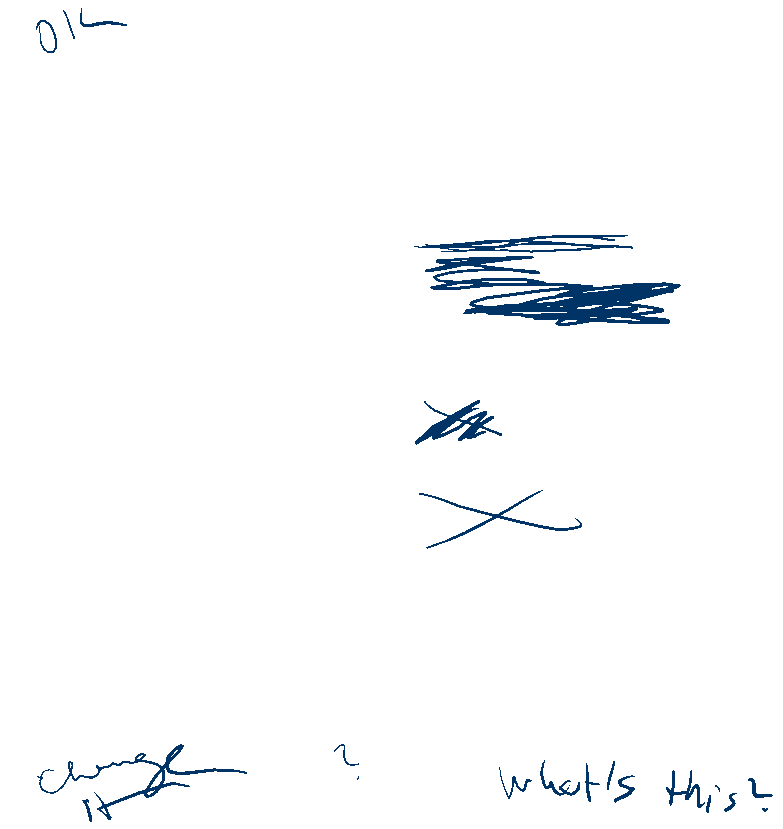What we covered here
• Moving north: Melissa is an “extremely dangerous” Category 3 hurricane as it closes in on Cuba, the National Hurricane Center warned, after the storm made a historic landfall in Jamaica as one of the strongest Atlantic hurricanes in history. For additional coverage, watch CNN.
• Impact: We’re already seeing reports of extensive damage to homes, hospitals and schools in southwestern Jamaica. Prime Minister Andrew Holness declared the country a disaster area Tuesday.
• Already deadly: Melissa is responsible for seven deaths — three in Jamaica during storm preparations, three in Haiti and one in the Dominican Republic.
Our live coverage has moved here.
Melissa is approaching landfall in eastern Cuba. Here’s what we know
Hurricane Melissa briefly restrengthened into a Category 4 storm with 130 mph winds, courtesy of warm Caribbean waters, as it departed Jamaica and began to barrel toward Cuba.
As of 2 a.m. ET, Melissa was back to a Category 3 hurricane with 125 mph winds, still an “extremely dangerous” storm, according to the National Hurricane Center. The core is expected to make landfall in southeastern Cuba early Wednesday morning, then move across the central or southeastern Bahamas on Wednesday.
The hurricane is so far responsible for at least seven deaths — three in Jamaica during storm preparations, three in Haiti, and one in the Dominican Republic.
Here’s what else we know:
Cuba
- More than 735,000 people have been evacuated in Cuba as Melissa approaches, according to President Miguel Díaz-Canel. “It will be a very difficult night for all of Cuba, but we are going to recover,” he said.
- Eastern Cuba could see up to 25 inches of rain in the mountains, which could trigger life-threatening flash flooding and mudslides. Parts of the island face up to 120 mph sustained winds with higher gusts near the storm’s center and up to 12 feet of storm surge at the coast.
Jamaica
- There were close to 15,000 Jamaicans in emergency shelters across the country Tuesday, including at a police station in the southwestern city of Black River, amid reports of extensive damage in St. Elizabeth parish.
- Jamaican Prime Minister Andrew Holness declared the country a ‘disaster area’ – a move partially aimed at preventing price gouging as food, water, and other goods are in short supply. The Jamaican government has rolled out an official website to streamline relief and recovery efforts.
- Holness said hospitals, housing, and commercial property have been damaged, and crews should be able to “start the recovery process immediately” on the eastern end of the island. By Wednesday, they should “be able to restore electricity, telecommunications.” The southern portion of the island will need additional days, he said.
- More than half a million people in Jamaica were without power Tuesday, with the most significant impact in western Jamaica, making up more than 77% of Jamaica Public Service customers across the country. Internet connectivity in Jamaica dropped to just 30% of normal levels by late Tuesday, according to NetBlocks, an internet monitoring organization.
- Around 25,000 tourists remain in Jamaica as the country begins its clean up from the hurricane.
President Donald Trump, who is in the final leg of his Asian tour, said the US is prepared to aid Jamaica in its recovery. “We’re watching it closely and we’re prepared to move, but it’s doing tremendous damage,” he said from Air Force One.
Rain rushes down flooded streets and into homes in Santiago de Cuba
Videos provided to CNN by a resident of Santiago de Cuba late Tuesday show forceful streams of water rushing down streets, alleyways and into homes as Hurricane Melissa approached.
Local residents were seen walking through ankle-deep water, with street objects floating around. One video depicts a dog being transported away from a flooded home.
Cuban president says country is ready to launch recovery efforts as soon as Melissa passes

Cuban officials have staged crews in the eastern part of the country to help launch recovery efforts as soon as Hurricane Melissa moves out, President Miguel Díaz-Canel said in a message to the public, according to state newspaper Granma.
“There are already electricity brigades, water resources brigades, communications brigades, and construction brigades that will work together with the forces in each territory to recover from the damage,” Díaz-Canel said, noting the storm is “one of the strongest, most severe, or perhaps the strongest hurricanes to have passed through the national territory.”
“There will be a lot of work to do,” Diaz-Canel said, acknowledging the hurricane’s destructive potential. Still, he expressed confidence in Cuba’s “full capacity to recover in food production, in the reconstruction of homes that are destroyed or damaged,” as well as in the recovery of the economy.
More than 735,000 people had been evacuated in Cuba as of Tuesday night, the president said.
Melissa is now an "extremely dangerous" high-end Category 3 hurricane closing in on Cuba
Melissa is now a Category 3 hurricane with 125 mph sustained winds, just 80 miles southwest of Guantanamo, and is expected to make landfall on Cuba’s southern coast within hours, according to the National Hurricane Center.
The hurricane is moving northeast at 10 mph, which will carry the core across eastern Cuba through Wednesday morning before racing toward the southeastern and central Bahamas later in the day.
What’s new:
- Melissa has weakened slightly from Category 4 to Category 3, but remains an extremely dangerous major hurricane, per the hurricane center.
- Landfall is imminent along Cuba’s southeastern coastline.
- Flooding has already begun. Rainfall totals remain catastrophic – 10 to 20 inches across eastern Cuba, with isolated 25-inch peaks expected to trigger flash floods and landslides.
- Storm surge up to 12 feet above normal tide levels remains possible along the southeast coast.
- Hurricane conditions are spreading inland across the warning areas in Cuba.
Melissa bears down on Cuba, landfall imminent
The center of Category 4 Hurricane Melissa is making its final approach toward southeastern Cuba. Landfall is imminent, but has not happened yet.
Heavy rain falling in Cuba as Hurricane Melissa approaches
CNN Havana Bureau Chief Patrick Oppmann posted a video to social media of heavy rain falling in Santiago de Cuba as Category 4 Melissa inches closer to landfall on the island.
Haiti closes schools, opens shelters as feels impacts from Melissa

As Hurricane Melissa bears down on Cuba, Haiti is also getting hit with heavy rain and wind from the storm.
A red alert, the highest level of warning, was issued for parts of the country, with other regions under orange alert, according to World Vision International Haiti. Many schools across the country suspended classes due to the weather and their use as temporary shelters, the organization said.
In the southern region, more than 100 households in vulnerable areas began relocating to emergency shelters on Friday, the organization added.
Twenty schools and high schools have been designated as shelters for affected families, with nine currently housing nearly 2,000 people, according to UNICEF.
"It's a race against time," to get aid to western Jamaica, storm chaser says
Western Jamaica is largely inaccessible after Hurricane Melissa slammed into the area Tuesday, knocking down trees and blocking roads with debris, journalist and storm chaser Jonathan Petramala, who is in Jamaica, told CNN’s Elex Michaelson early Wednesday.
When morning comes, Petramala said he hopes the government and volunteers are able to clear away trees and power lines and get to residents in Black River, a city in southwest Jamaica near where the hurricane made landfall.
“It’s a race against time, because every day that passes, not only are folks that are injured or in need of help suffering, but the fact is that the world’s attention gets divided so quickly. … That can really impact aid that comes in,” he said.
Melissa won't stop at Cuba. The Bahamas and Bermuda are next in line
Once Melissa crosses eastern Cuba overnight, it won’t be done wreaking havoc.
The hurricane is expected to move through the southeastern or central Bahamas on Wednesday, likely as a strong Category 2 at that point. Even with some weakening, Melissa will bring damaging winds, dangerous storm surge and 5 to 10 inches of rain capable of triggering flash floods and landslides across the islands.
The Turks and Caicos islands will also be in the path of Melissa’s outer core, bringing tropical-storm conditions with hurricane-force gusts, dangerous surf, and up to 3 inches of rain that could trigger flooding.
By Wednesday night, Melissa will catch a ride on the jet stream and begin accelerating to the northeast over open Atlantic waters. But the historic and persistent storm will not be quite done yet. Melissa is forecast to hurtle toward Bermuda, maintaining hurricane strength, by Thursday night, where it could deliver a brief but intense round of wind and drenching rain.
After that, Melissa should continue racing into the open Atlantic — but its impacts and devastation across the Caribbean and western Atlantic will linger long after it leaves the region.
Widespread internet outages reported in Jamaica following Hurricane Melissa
Internet connectivity in Jamaica dropped to just 30% of normal levels by late Tuesday, following the impact of Hurricane Melissa, according to NetBlocks, an internet monitoring organization.
The storm’s heavy winds caused widespread damage to power and communications infrastructure, cutting off many parts of the country, NetBlocks said.
In pictures: Residents shelter as Melissa churns toward Cuba
Hurricane Melissa is barrelling toward Cuba as a powerful Category 4 storm after making a historic landfall in Jamaica as one of the strongest Atlantic hurricanes in history.
More than 168,000 people were evacuated ahead of the storm in Santiago de Cuba, the island’s second-most populated province, where the worst conditions are expected to be felt, according to Cuban officials.
Elsewhere in the region, residents in Haiti are sheltering from the impacts of the storm’s outer rain bands and gusty winds.





Melissa's strong winds batter neighborhood, nearly tearing off tin roof
Video captured Hurricane Melissa’s strong winds battering a neighborhood in Mandeville, Jamaica, Tuesday, with palm trees swaying violently as a tin roof was nearly ripped off a structure.
The video showed a resident in a rain jacket trying to secure the roof with sandbags as it was peeled upward. Power lines were also seen swinging in the wind as the storm’s gusts swept through the neighborhood.
About 25,000 tourists remain in Jamaica after Hurricane Melissa
About 25,000 tourists are in Jamaica as the country begins cleaning up and assessing the damage wrought by Hurricane Melissa, officials said Tuesday after the storm.
“There is no need to worry,” Dana Morris Dixon, Minister of Education, Skills, Youth and Information said in a statement.
“The Ministry of Tourism has its centre that is in constant communication with all of the hotels, has been providing support and so we are keeping those tourists as safe as we possibly can,” she said.
Jamaica declared a disaster area, prime minister says
Jamaican Prime Minister Andrew Holness declared the country a disaster area Tuesday.
The declaration is partly aimed at preventing price gouging, the prime minister said in a statement on Facebook, as residents in the country scramble to secure essential goods.
“We must … continue to proactively maintain stability, protect consumers, and prevent any exploitation at a time when citizens are securing food, water, and supplies,” Holness said.
“These orders give the Government the tools to continue managing our response to Hurricane Melissa,” he said.
Jamaica launches official relief website to aid hurricane recovery
The Jamaican government has rolled out an official website to streamline relief and recovery efforts after Hurricane Melissa carved a destructive path across the country Tuesday.
“We have already been made aware of some nefarious individuals trying to collect money on behalf of Jamaica,” Dana Morris Dixon, Minister of Education, Skills, Youth and Information said, urging people to only donate through the government website.
In addition to donations, the site allows locals to upload photos of damage, such as flooding or blocked roads, to notify authorities in real time, officials said. An interactive shelter locator is also available.
“It is all about mobilising resources, so it’s a resource for those locally, for those in the diaspora and anywhere in the world that want to give support to Jamaica,” Dixon added.
The website includes a preliminary needs list to support the approximately 400,000 people impacted by the storm, including items for sheltering those left without a home, hygiene and medical supplies and debris clearing equipment.
Melissa has restrengthened into a Category 4 hurricane
Melissa’s now packing 130 mph sustained winds as it nears southeastern Cuba. The National Hurricane Center says the storm is re-strengthening and could make landfall within the next few hours as an extremely dangerous Category 4 hurricane.
The center is about 110 miles southwest of Guantanamo, moving northeast at 9 mph. The core will cross the eastern tip of Cuba overnight, then sweep across the southeastern and central Bahamas on Wednesday.
Meanwhile, Jamaica has been downgraded from a Hurricane Warning to a Tropical Storm Warning as conditions slowly improve there.
Melissa has already proven how quickly it can strengthen over warm water, and the same fuel is still powering it. Even as it moves inland, life-threatening flooding and destructive winds will continue well into Wednesday morning in eastern Cuba.
"It will be a very difficult night for all of Cuba," country's president says

More than 735,000 people have been evacuated in Cuba as Hurricane Melissa was spinning more than 100 miles southwest of Guantanamo Tuesday night, Cuban President Miguel Díaz-Canel said.
“We have just checked with the provinces on the measures taken given the passing of Melissa,” Díaz-Canel said on social media.
“It will be a very difficult night for all of Cuba, but we are going to recover,” he added.
Trump says the United States is prepared to aid Jamaica

President Donald Trump said the US is keeping a close eye on the damage inflicted by Hurricane Melissa and is prepared to aid Jamaica in its recovery.
“On a humanitarian basis, we have to. So we’re watching it closely and we’re prepared to move. But it’s doing tremendous damage,” Trump said to reporters on Air Force One, en route from Japan to South Korea.
“It’s literally just … knocking down everything in front of it,” Trump said of the storm.
Jamaican police survey damage left by Hurricane Melissa
Video shared by the Jamaican Constabulary Force shows officers surveying extensive damage in Black River, near where Hurricane Melissa made landfall as a Category 5 storm Tuesday.
The area was heavily damaged, with piles of debris and vehicles sitting in muddy water, the footage showed. Downed power lines covered the area as police patrolled.
Jamaican authorities on Tuesday reported the country’s infrastructure had been “severely compromised” after Melissa made landfall as the strongest storm to ever directly hit the Caribbean nation.










